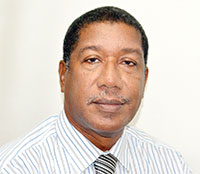AT least eight out of every 10 patients who seek dental treatment do so as a consequence of some kind of infection. Most, if not all, expect that if that person’s face is swollen, then their dentist will automatically prescribe medications. But, many times, an immediate extraction is required.
A bacterial attack can manifest as a condition which may range from a simple carie (tooth decay) to an acute facial abscess.
TWO METHODS
There are two basic methods to control an infection: Prevention and treatment. In both cases, non-pharmacologic (not using drugs) efforts are of considerable importance.
In prevention, one must be concerned with eliminating those factors that lead to infection: Bacterial plaque, oral debris, decayed teeth, etc.
The incidence of post-surgical infections can be reduced by proper wound closure, and the use of aseptic (sterile) and atraumatic (conservative ) techniques.
In the treatment of infections, one must provide indicated local treatment (scraping, incision, drainage,etc) and supportive care (ensuring adequate rest, nutition, and fluid intake).
The use of antibiotics is only a part of the treatment for infections. The other major part is the removal of the cause of the infection.
ACUTE OR CHRONIC
It means, therefore, that in order to solve the problem of a dental abcess, the first step is to decide if the condition is acute or chronic.
Acute abscesses must be drained and/or de-inflammed before instituting medication. It often happens that persons with facial abscesses consult physicians instead of dentists for treatment.
While the physician can only prescribe an antibiotic, the dentist, by necessity, can also remove the aeitologic agent (which is crucial) of the infection, in addition to prescribing the appropriate antibiotic.
Someone who acquires a swollen face with a painful area, as a result of a decayed tooth, is suffering from the first stage of a paradontal abcess. It is important for the dentist to carefully examine and decide whether he/she should do the extraction immediately.
Depending on the stage of the infection, anti-inflammatory and antibiotic therapy may be prescribed for at least five days. If an attempt is made to extract the offending tooth without first applying this treatment, two things may happen: The pus surrounding the tooth may disseminate to adjacent tissues or enter the bloodstream, thus exacerbating the situation.
At this stage, due to the acidity of the swollen tissues, the anaesthetic may not work sufficiently, and so the patient would have a very painful extraction.
ANTIBIOTICS
The need for antibiotic prophylaxis to prevent sub-acute bacterial endocarditis in patients with rheumatic heart disease, who are to experience procedures which are likely to precipitate bacteria in the blood stream, is well known.
The recommended dosage for most patients is 600,000 units of procaine penicillin G, mixed with 200,000 crystaline penicillin G administered intra-muscularly one hour prior to the dental procedures, and once daily for two days following that.
A second aspect of prophylactic antibiotic coverage relates to the use of antibiotics to prevent infections after any dental operation. Studies show that apart from rheumatic heart disease, as stated above, there is no need for someone to take antibiotics before having any kind of surgery, whether it is a simple extraction or periodontal surgery.
Most bacteria that cause dental infections are within the antibacterial spectra of penicillin G, penicillin V, phenethicillin, ampicillin, erythromycin, tetracyclins, lincomycins, clindamycin and the cephalosporins.
Penicillin is the safest and most powerful antibiotic for severe infections. However, it should not be abused; it should only be used in severe infections, when the body‘s defences are impaired, where drug toxicity is particularly significant, as in infants, small children, the elderly, the debilitated, pregnant women and those with liver and kidney disorders.



.jpg)








